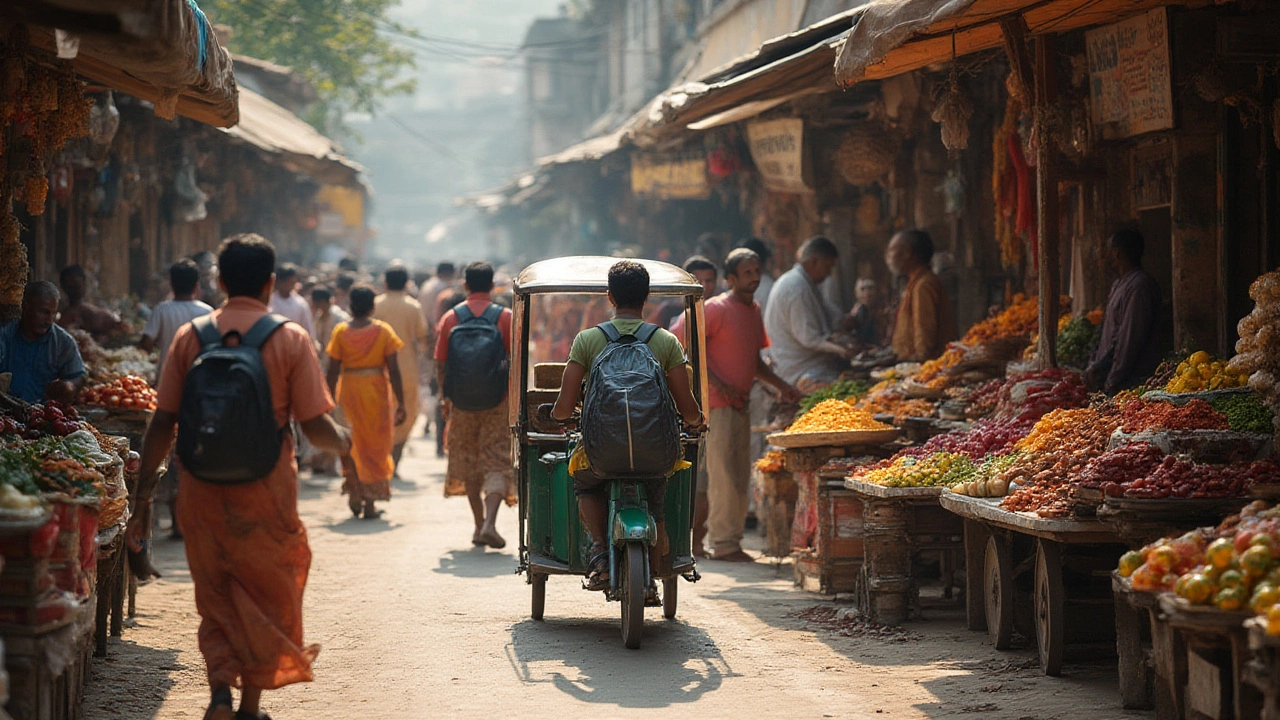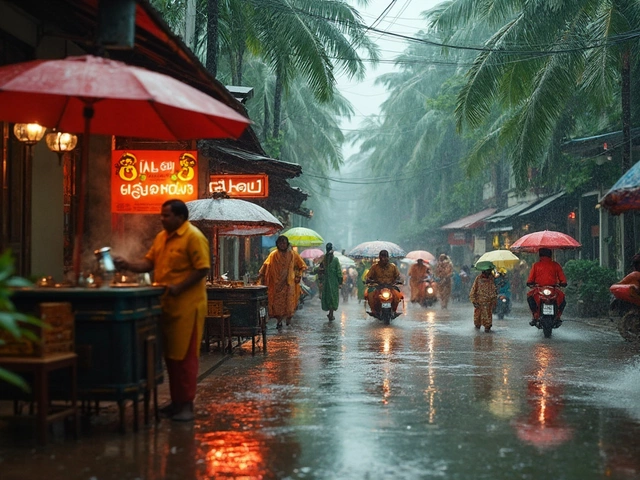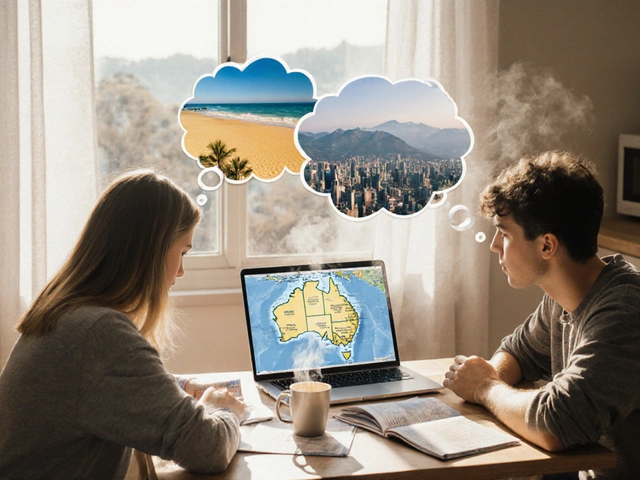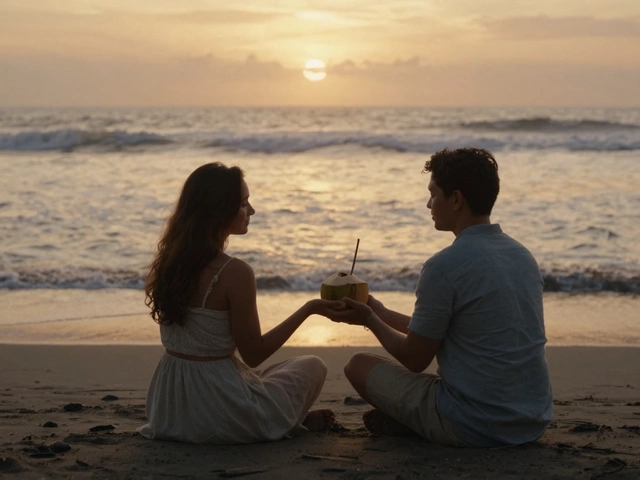There are travelers who call India a backpacker’s dream, and then there are people who swear they blew their annual bonus in a single Delhi shopping spree. So, is India expensive for tourists? It’s not a straight answer. I’ve seen people live off pocket change for a month, and I’ve watched others drop banknotes like confetti at a wedding. India will meet you at your budget – it stretches itself wide you can go rugged, regal, or anywhere in between. But there are details you should actually know before stepping off the plane or train, and that’s where it gets interesting.
The True Costs of Travel in India
The biggest myth about India? That it’s always dirt cheap. Sure, you can score $5 hostel beds, fill up on superb street eats for less than a latte back home, and travel cross-country for what feels like pennies. But step into certain circles—heritage hotels, upscale restaurants, high-end transport—and you’ll see prices that could rival Paris.
Accommodation costs are probably the first thing you’ll check. The spectrum is wild. In smaller towns, cheap guesthouses go for $8-12 a night, clean enough for you to sleep soundly and maybe meet a new friend at breakfast. Step it up to boutique hotels or chains (think Taj or Oberoi), and you’re suddenly looking at $80 a night—or way more in places like Udaipur or Goa during busy season. Homestays, with true local hospitality, can be golden at around $25 a night. If you want ultra-budget, hostels in big cities like Delhi, Mumbai, or Bangalore offer a bunk for $6-10, often with decent wifi and filtered water.
| Type | Low-budget | Mid-range | Luxury |
|---|---|---|---|
| Accommodation | $6-12/day | $25-60/day | $90+/day |
| Meals | $2-6/day | $12-22/day | $40+/day |
| Transport (Internal) | $2-5/day | $10-25/day | $40+/day |
Eating in India is next-level, both in taste and savings. Hit the street stalls for legendary chaat, masala dosa, aloo tikki – a meal for under a couple of bucks. Middle-of-the-road restaurants might charge $7 for a hearty thali or meal set. Upscale spots, especially in metros, can rival Western prices: a nice dinner for two in Mumbai or Gurgaon can fetch $40-60. Oh, and in big cities, the new trend is international fusion cafes where you’ll easily spend $8 for coffee and cake.
Transportation is a world of its own. Sleeper-class train tickets between New Delhi and Varanasi (a good 14 hours) run about $10. If you opt for an air-conditioned coach, it’s $25 or so. Rickshaws and Ubers are everywhere in big cities—short rides go for $2-3, but always check the meter, and don’t be shy about negotiating with tuk-tuk drivers. Domestic flights can be a bargain if you book at least a month out. For example, SpiceJet and IndiGo sometimes sell Delhi-Goa flights for $35-50 if you’re quick.
Entry tickets add up, though: foreigners pay way more than Indians at some attractions. The Taj Mahal, for example, is around $15 for foreign tourists, compared to less than a dollar for locals. Other big sites follow this pattern, but many temples and parks are still free. Don’t ignore the potential for sudden expenses, like tipping (expected for porters, drivers, and hotel staff) or buying bottled water everywhere.
Mixing in a few guided tours or adventure activities? A day hike in Himachal Pradesh: $10-15. A yoga retreat in Rishikesh: as little as $18 a day, sometimes including food and lodging. But a private safari in Ranthambore National Park will set you back around $65-80 easily. India is affordable, but the tempting extras can tip your budget.
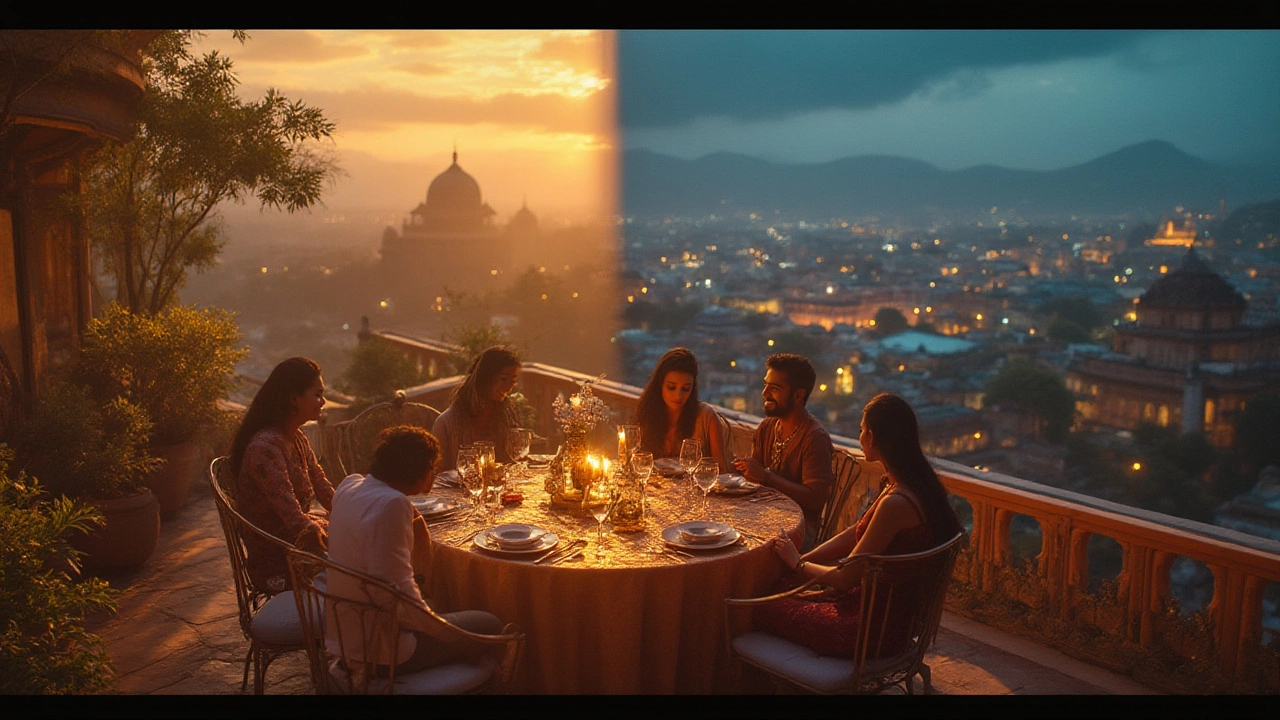
Why Costs Vary So Much: Region, Season, Style
India’s a huge country, and where you go changes everything about what you spend. The south, like Kerala or Tamil Nadu, is reliably more friendly to budget travelers than major metros in the north. Goa has a hilariously wide price range—you can sleep in a beach shack for peanuts or drop five grand a night at a five-star resort fronting the Arabian Sea. During peak holiday periods like Diwali, Christmas (especially in Goa!), Holi, or even New Year’s Eve, prices for hotels and flights double or even triple in tourist hubs. The good news? Shoulder seasons (Monsoon June-September for most of India, or hot North Indian summer in May) get you the same sights for a lot less cash and smaller crowds, if you’re prepared for heat or showers.
Your travel style matters—a lot. Early in my travel days, I backpacked India with just a change of T-shirts and a perpetual cup of masala chai in hand. My daily spend squeaked in under $20, including basic hotels, street eats, and slow trains. Travel with my kid, Rylan, means a few upgrades: private car sometimes, hotels with AC, less adventurous food (keep the belly safe). Now, it’s more like $60-80 a day for two—still cheaper than most destinations, but not pocket change.
Let’s talk cities versus countryside. Mumbai, Delhi, and Bangalore will drain your wallet the fastest (maybe not by Tokyo or London standards, but still). Cafe culture, imported beer, rooftop lounges, and airport rides all cost extra. The moment you’re in places like Pushkar, Jaisalmer, or Coorg, life feels way more chilled and your rupees go further.
Another thing most first-timers miss: sightseeing costs vary too. Walking through a spice market in Kochi or exploring temples in Madurai costs you nothing. But tours in Rajasthan, houseboat rides in Kerala, or spa sessions in a Himalayan resort jump to Western prices—expect $45-100 for something fancy, especially if international agencies are involved.
- High season: December–February (expect high prices for everything in major tourist centers)
- Shoulder season: March–May, September–November (best deals, decent weather)
- Monsoon: June–September (lowest prices, but heavy rain in some places)
Then there’s the shopping. India’s dangerous for souvenir lovers. Handmade pashminas, carved wood, spices, and silver jewelry can be a steal, but you need to haggle. Markets in Jaipur and Delhi expect it; don’t pay rack rate. (Quick tip—never agree to the first quoted price. Walk away once, and you’ll probably get a better offer.) At emporiums, prices are fixed but way higher. Some travelers come for Ayurvedic treatments, yoga wear, or bespoke suits—you’ll pay a tenth of the price compared to Europe or North America, but only if you avoid tourist traps (ask locals where they shop or where their families go for wedding gifts).
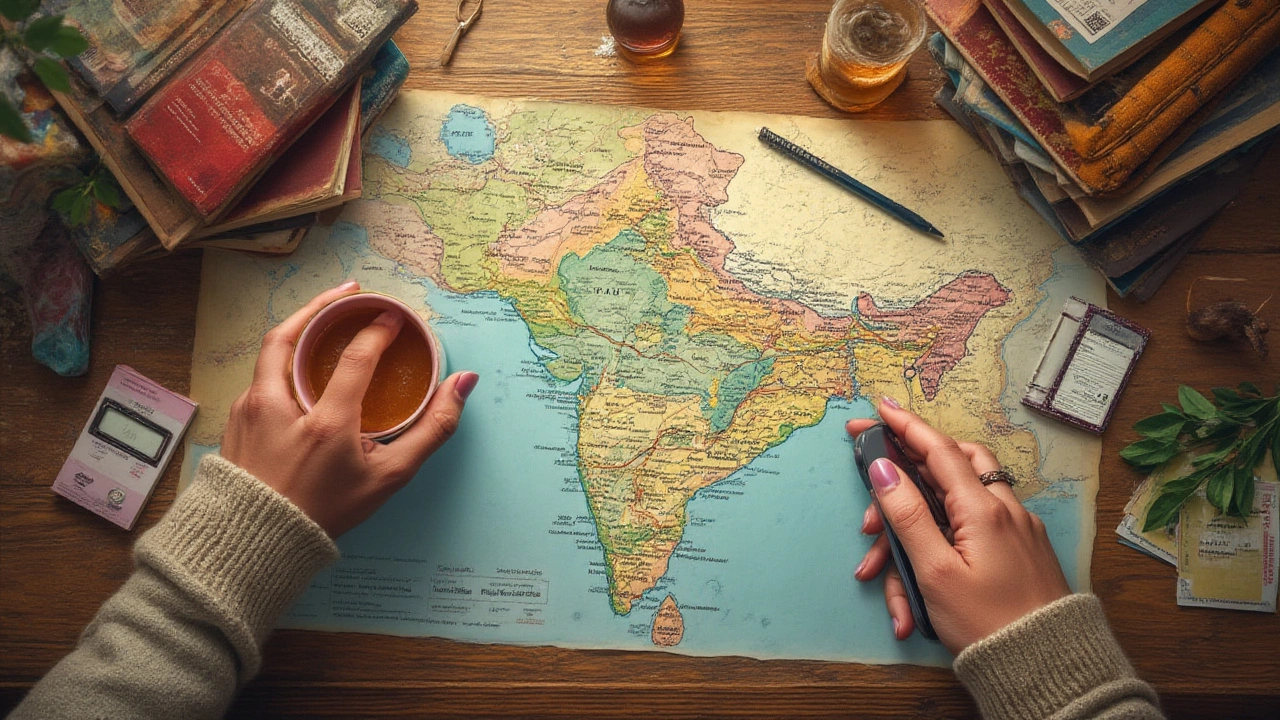
Making Your Money Go Further: Essential Tips
If you want to travel *smart* in India, there’s an art to stretching your budget. First off, plan some things in advance and leave the rest flexible. Booking major train journeys or any flights early can save you heaps, especially during festivals—Indian Railways tickets on IRCTC often go up in price closer to the departure date, and popular routes sell out lightning fast. On the other hand, in less crowded places, you can often wander in and negotiate hotel rates right at the desk. Always check hotel reviews, though—spending an extra $5 can drastically improve comfort and safety.
One insider secret? The prepaid taxi booths at airports. You’ll pay a fixed rate, avoid scams, and there’s no need to haggle. In cities, ride-share apps like Ola and Uber are everywhere, safe, and way cheaper than many hotels’ private cars. For longer distances, consider night trains. They save hotel costs, and waking up in a new city is half the adventure. Just pack earplugs if you’re a light sleeper—trains can get noisy.
Foodies can eat like kings without splurging. Just pay attention to where locals go—busy street stalls are safer than empty ones (fast turnover means fresh food). Drink only bottled or filtered water, and always check the seal. Skip expensive Western breakfasts in hotels and grab a masala omelette and chai on the street.
For sightseeing, pay attention to combo tickets—many cities sell day passes that give you access to multiple monuments for a serious discount. Most museums and sites have two price lists, so always ask about family tickets, student discounts, or group deals if you’re traveling together. Temples and parks are almost free, but places managed by the Archaeological Survey of India usually have set fees for foreigners.
Cash is still king in a lot of India, especially in rural areas. Big cities do have digital payments, Google Pay or Paytm, and credit cards are common in hotels and malls. But always carry some rupees (small denominations!) for rickshaw rides, tips, or buying snacks at the station. ATMs are easy to find in every city, but sometimes run out of money during festival rushes.
Beware classic tourist scams: "helpful" strangers at railway stations selling fake tickets, shops that assure you their jewelry is gold (probably not), or taxis who pretend the hotel you booked is "closed." Trust your instincts and if you get an odd vibe, walk away or ask a police officer. If you’re feeling unsure, official tourist information booths can be a lifesaver.
Want to see wild India for less? Join a group trek in Himachal or Uttarakhand, where shared costs for guides and permits drop the price. Backpackers hostels often run free walking tours where you see local neighborhoods with someone who really knows the turf. And don’t miss out on free cultural festivals—ask about what’s on when you arrive, from Eid and Diwali to local music nights. Some cities have nightly Ganga aartis or temple parades that are worth seeing, and you won’t spend a rupee.
There’s room for splurges too. If you want to try a meal at a five-star palace hotel, go for lunch—it’s half the price of dinner, and you get the grand surroundings. Ayurvedic massages or yoga classes are way cheaper here than at home. Even India’s travel cost sweet spot is the choices; mix a few treat-yourself moments with budget days, and you’ll never feel like you’re missing out.
India can blow your mind without blowing your budget, or you can live it up if you feel like loosening the purse strings. The key is knowing where your cash goes. Keep your expectations flexible, savor the little surprises, and don’t be afraid to haggle a bit or treat yourself when it really matters. That’s how you’ll come home with stories (and maybe some rupees left for your next trip).
